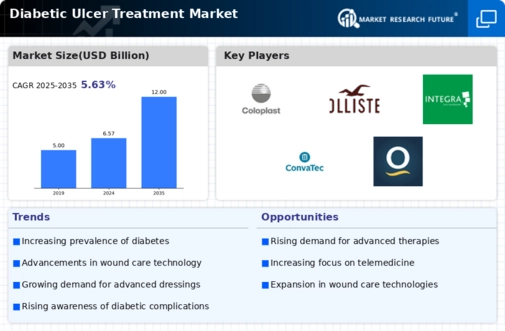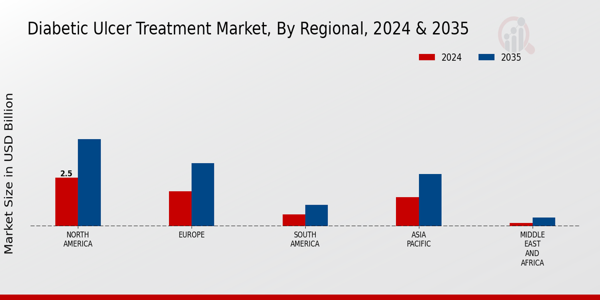Market Share
Diabetic Ulcer Treatment Market Share Analysis
To stay competitive and meet patient requirements in the Diabetic Ulcer Treatment Market, firms use several market share positioning methods. Companies use product differentiation to stand out from competition by creating new remedies. Companies engage in research and development to create cutting-edge medicines that solve diabetic ulcer issues and deliver improved efficacy. This technique appeals to individuals and healthcare professionals seeking more effective and efficient treatments.
Companies also use market penetration to grow their share in current marketplaces. To increase market share, extensive promotion, aggressive pricing, and effective distribution methods are needed. By expanding their audience and brand exposure, organizations may strengthen their position and perhaps overtake competitors in crucial locations. This strategy is vital in the Diabetic Ulcer Treatment Market, as diabetes incidence is increasing need for effective treatments.
Collaboration and partnerships are crucial to Diabetic Ulcer Treatment Market share positioning. Companies may partner with healthcare institutions, research groups, and other industry participants to share resources. Companies may speed up therapy development and commercialization by sharing expertise, benefiting both. These collaborations increase industry knowledge and create a collaborative ecosystem that boosts innovation and market growth.
Additionally, customer-centric initiatives can greatly effect Diabetic Ulcer Treatment Market market share positioning. Understanding healthcare professionals, patients, and caregivers' demands helps companies adjust their goods and services. Customer-centricity increases patient outcomes and brand loyalty and confidence. Companies may improve their products, gather customer insights, and establish long-term market success by actively engaging with customers.
Diabetic Ulcer Treatment Market firms also focus on geographic growth. This entails entering new markets or expanding in high-need medical areas. Companies may reach varied patient groups and increase market share by tailoring their goods and marketing techniques to regional needs. However, knowing local rules, cultural differences, and healthcare systems is essential for regional development.









Leave a Comment